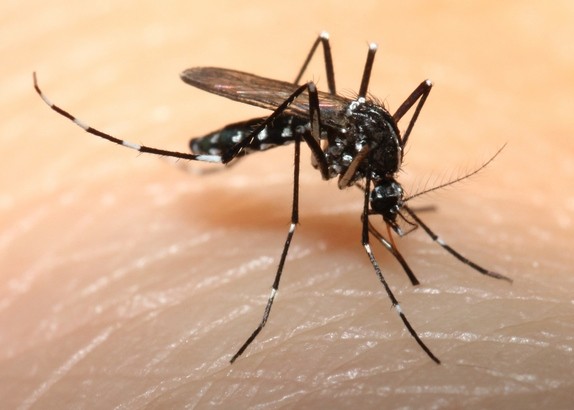Aedes africanus
(Aedes africanus)

Description
Aedes albopictus (Stegomyia albopicta), from the mosquito (Culicidae) family, also known as (Asian) tiger mosquito or forest mosquito, is a mosquito native to the tropical and subtropical areas of Southeast Asia. In the past few centuries, however, this species has spread to many countries through the transport of goods and international travel. It is characterized by the white bands on its legs and body. This mosquito has become a significant pest in many communities because it closely associates with humans (rather than living in wetlands), and typically flies and feeds in the daytime in addition to at dusk and dawn. The insect is called a tiger mosquito for its striped appearance, which resembles that of the tiger. Ae. albopictus is an epidemiologically important vector for the transmission of many viral pathogens, including the yellow fever virus, dengue fever, and Chikungunya fever, as well as several filarial nematodes such as Dirofilaria immitis.Aedes albopictus is capable of hosting the Zika virus and is considered a potential vector for Zika transmission among humans. In 1894, a British-Australian entomologist, Frederick A. Askew Skuse, was the first to scientifically describe the Asian tiger mosquito, which he named Culex albopictus Later, the species was assigned to the genus Aedes and referred to as Aedes albopictus. Like the yellow fever mosquito, it belongs to the subgenus Stegomyia within the genus Aedes.In 2004, scientists explored higher-level relationships and proposed a new classification within the genus Aedes and Stegomyia was elevated to the genus level, making Aedes albopictus now Stegomyia albopicta. This is, however, a controversial matter, and the use of Stegomyia albopicta versus Aedes albopictus is continually debated. The Asian tiger mosquito originally came from Southeast Asia. In 1966, parts of Asia and the island worlds of India and the Pacific Ocean were denoted as the area of circulation for the Asian tiger mosquito.Ae. albopictus as a native to tropical and subtropical regions with warm and humid climate, is active all year long; however, it has been adapting successfully to cooler, temperate regions, where they hibernate over winter. Eggs from strains in the temperate zones are more tolerant to the cold than ones from warmer regions. The species can even tolerate snow and temperatures under freezing. Adult tiger mosquitoes can survive throughout winter in suitable microhabitats.
Taxonomic tree:







